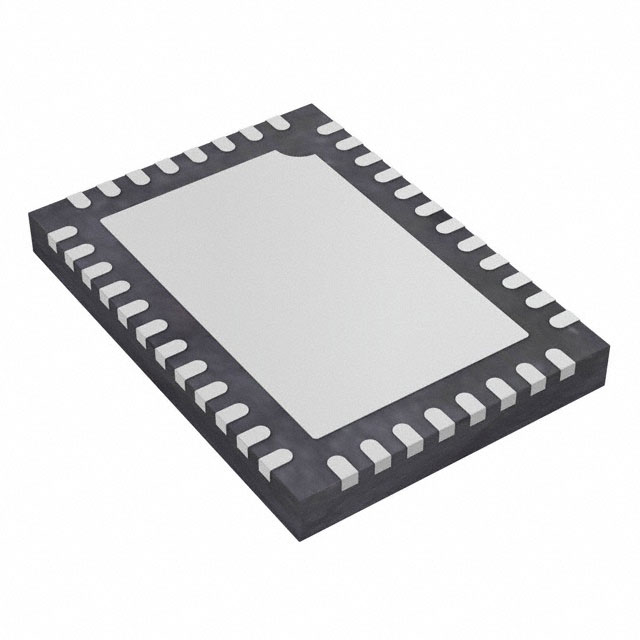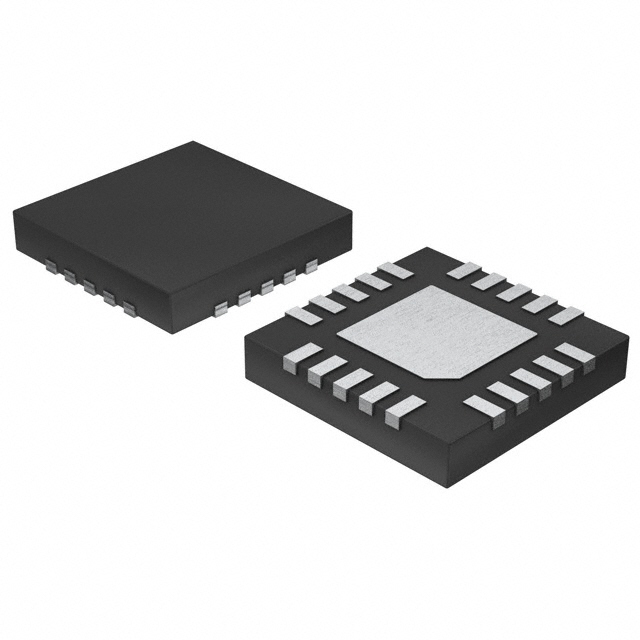Ⅰ. Linear - Video Processing
Ⅱ. Physical Characteristics of Linear - Video Processing
Ⅲ. Electrical Characteristics of Linear - Video Processing
Linear video processing refers to the application of linear operations on video data to manipulate, enhance, or analyze the content. It involves using mathematical operations that can be represented as linear transformations or convolutions to process video frames and sequences.

In the context of video processing, linear operations maintain the linearity property, which means that the output of an operation is a linear combination of the input values. This property allows for efficient and predictable processing of video data, as well as enabling the use of mathematical tools and algorithms to achieve desired outcomes.
Linear video processing techniques are used in various applications, including video compression, video enhancement, video filtering, and video analysis. By leveraging linear operations, these techniques can effectively transform video content while preserving important visual characteristics.
One of the fundamental linear operations in video processing is convolution. Convolution involves sliding a small matrix, known as a kernel or filter, over the pixels of a video frame to perform tasks such as blurring, edge detection, or sharpening. The resulting output is a linear combination of the pixel values in the neighborhood of each location, allowing for localized transformations.
Linear operations are also used for filtering in video processing. Filters can remove noise, enhance specific image features, or modify the frequency spectrum of the video frames. Various filters, such as low-pass filters, high-pass filters, or median filters, are employed to achieve different objectives.
Color space conversion is another important aspect of linear video processing. Converting between different color representations, such as RGB, YUV, or HSV, often involves linear transformations. These conversions enable adjusting color properties, separating luminance from chrominance information, or applying color corrections.
Motion estimation is a key component in video compression and analysis. It involves estimating the motion between consecutive video frames to capture the temporal changes. Linear techniques, such as block matching, are commonly used to find the best matching blocks between frames and derive motion vectors.
Linear video processing techniques also encompass resizing or scaling video frames, transforming or warping images, and other operations that maintain linearity. These operations allow for adjusting the size, aspect ratio, or perspective of video content while preserving visual integrity.
While linear video processing provides a powerful framework for manipulating and analyzing video data, it's important to note that some operations in video processing involve non-linear relationships between input and output values. Non-linear operations, such as gamma correction or logarithmic operations, are employed to address specific characteristics of video content that cannot be adequately represented by linear transformations alone.
Overall, linear video processing techniques form a fundamental basis for many applications in the field, providing a flexible and efficient framework for manipulating, enhancing, and analyzing video content.
Physical Characteristics of Linear - Video Processing
When discussing the physical characteristics of linear video processing, we can focus on two aspects: the processing pipeline and the computational requirements. Let's explore each of these aspects:
1.Processing Pipeline:
Linear video processing typically follows a sequential pipeline of operations. Each video frame goes through a series of linear transformations and operations, with the output of one stage serving as the input to the next stage. The pipeline may include operations such as color space conversion, filtering, resizing, motion estimation, transformation, and more.
The sequential nature of the pipeline implies that the video frames are processed one after another in a linear fashion. This allows for efficient processing and straightforward implementation on hardware or software platforms. However, it also means that each frame's processing time can directly impact the overall processing speed and real-time capabilities of the system.
2.Computational Requirements:
Linear video processing can have demanding computational requirements, especially when dealing with high-resolution video or real-time processing. The operations involved, such as convolution, filtering, and transformation, often require extensive computational resources.
Matrix multiplication and convolution operations are at the core of many linear video processing techniques. These operations involve a large number of multiply-accumulate (MAC) operations, which are computationally intensive. High-performance hardware architectures, such as GPUs (Graphics Processing Units) or specialized video processing units, are often employed to accelerate these computations.
The computational complexity of linear video processing can also be influenced by the size of the video frames and the number of frames being processed. For example, video compression algorithms may analyze multiple frames together, requiring additional computational resources to handle the temporal dependencies.
Efficient memory management is another important consideration in linear video processing. Video frames are typically stored as large arrays, and processing operations may require access to neighboring pixels or frames. Optimizing memory access patterns and utilizing memory caches effectively can significantly improve the processing speed and efficiency.
Real-time video processing applications, such as video streaming or video surveillance, often impose stringent constraints on the processing time. Meeting these requirements may involve optimizing algorithms, parallelizing computations, or utilizing specialized hardware architectures.
In summary, the physical characteristics of linear video processing involve the sequential nature of the processing pipeline and the computational demands associated with the operations performed. Efficient resource utilization, optimization of computational complexity, and appropriate hardware choices play crucial roles in achieving high-performance video processing systems.

Electrical Characteristics of Linear - Video Processing
When discussing the electrical characteristics of linear video processing, we can focus on aspects such as signal representation, voltage levels, bandwidth requirements, and power consumption. Let's explore each of these aspects:
1.Signal Representation:
Video signals in linear video processing are typically represented as analog or digital signals. Analog video signals are continuous voltage waveforms that vary in amplitude to represent different brightness and color levels. Digital video signals, on the other hand, are discrete representations of the video content, usually encoded as binary numbers.
Analog video processing involves handling continuous voltage signals, which require analog circuitry to process and manipulate the signal. Analog-to-digital converters (ADCs) may be used to convert analog video signals to digital representations for further processing.
2.Voltage Levels:
In both analog and digital video processing, voltage levels play a crucial role. Analog video signals typically have standardized voltage ranges, such as 0 to 1V for composite video or 0 to 0.7V for component video. These voltage levels ensure compatibility between video sources, processing devices, and displays.
Digital video signals, usually represented as binary numbers, rely on specific voltage thresholds to distinguish between 0s and 1s. Different video standards, such as HDMI (High-Definition Multimedia Interface) or DisplayPort, define the voltage levels and signaling protocols to ensure reliable transmission and reception of digital video data.
3.Bandwidth Requirements:
Video processing requires high-speed data transmission to handle the large amount of data present in video frames. The bandwidth requirements depend on the video resolution, color depth, frame rate, and any additional data channels (e.g., audio, metadata) that are being transmitted or processed.
Higher-resolution video, such as 4K or 8K, demands higher bandwidth due to the increased number of pixels and color information. Similarly, higher frame rates, such as 60 frames per second or even higher for high-speed video, also increase the required bandwidth.
4.Power Consumption:
Linear video processing can be computationally intensive and may require significant power resources. The processing units, such as CPUs (Central Processing Units), GPUs (Graphics Processing Units), or dedicated video processing chips, consume power during the execution of linear operations.
Power consumption considerations become crucial, especially in portable devices like smartphones or battery-operated cameras. Efficient algorithms, hardware optimizations, and power management techniques are employed to reduce power consumption without compromising video processing performance.
Additionally, power supply requirements need to be considered to provide stable and clean power to the video processing components. Voltage regulators, decoupling capacitors, and proper grounding techniques are employed to ensure reliable operation and minimize noise interference.
Overall, the electrical characteristics of linear video processing involve signal representation (analog or digital), voltage levels for compatibility and signaling, bandwidth requirements for high-speed data transmission, and power consumption considerations for efficient operation. These characteristics play a significant role in designing video processing systems, ensuring reliable and high-quality video processing.



